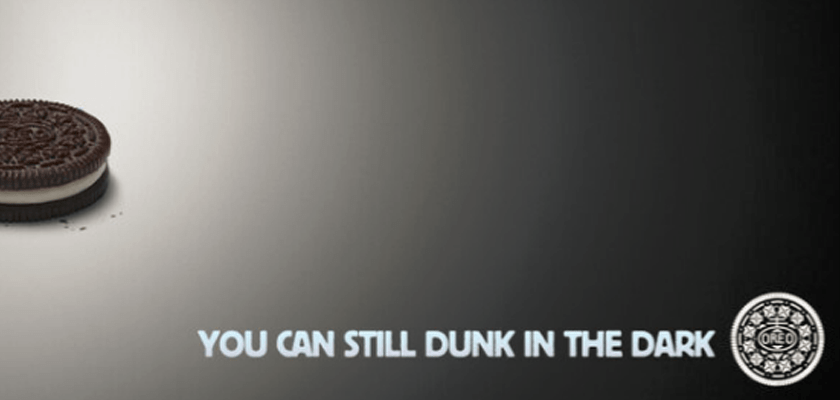How To Use Events for Engaging Push Notifications

When it comes to brands reacting to current events, Oreo’s famous post about the 2013 Super Bowl power outage deserves a spot in the Hall of Fame:

By reacting quickly to a power outage at one of the biggest events of the year, the Oreo team scored a ton of (nearly) free publicity and recognition—including roughly 15,000 retweets and 20,000+ Facebook likes.
Your brand can take advantage of events like the Super Bowl, awards shows, or other timely events (like holidays) to drive mobile app engagement. However, instead of having a team on standby waiting to react, we recommend planning a push notification campaign in advance.
Here are some recommendations from the Taplytics Enterprise Services Team on how to design engaging rich push notifications around popular cultural events.
1. Plan for pre- and post-event engagement
Our research has shown that when push notifications related to an event are sent 24 hours before the event, they create a spike in engagement when the push notification is sent and then again when the event actually occurs—even though a second push notification hasn’t been sent!
The lesson here: you don’t have to wait until the event occurs to capitalize on it. In fact, it’s in your best interested to send a few pushes before the event to get your audience excited.

While you can’t predict what will happen during a live event, you can draft copy for possible scenarios in advance. This way, your team can quickly send timely push notifications during the event (if you choose to send push during the event).
Also, don’t forget to re-engage post event with recaps and other relevant content.

Bonus tip: If you segment your pushes based on a user’s engagement with previous messages (or other user attributes that indicate they would like this type of content for targeting) you can prevent notification fatigue among your larger user base, who may not be interested in some popular events. Which brings us to tip #2…
2. Segment your audiences
Go beyond a one-size-fits-all approach to your campaign so you can maximize engagement among different subsets of your users.
For example, you could create campaigns based on the following behaviours or attributes to customize your messages:
- Completed registration or not
- The last time they were active
- Paying subscriber vs. free account
- User preferences
- Past content consumption or purchases
- Demographics like location, age, gender, etc.
By creating targeted messages for these audiences, you’ll be better able to drive user action.
Here are a few examples:
- For registered users, tell them what’s waiting inside the app for them related to the event.
- For non-subscribers or those who never finished registration, tease them with what’s available if they complete sign-up before or during the event.
- For those who have been inactive, reference the current promotion around the event as a reason to re-enter the app.
- Send live push updates to those who have opened push notifications about the event previously, or have interacted with related content about the event, to keep engagement high throughout.

3. Send engaging, clear messages
Here are a few tips for making sure your messages lead to opens and app visits:
- Keep your call-to-action succinct and clear so that you guide users toward the action you want them to take.
- Highlight the benefit of your offer (if there’s room).
- Use emojis to catch your viewers’ eyes 👀.
- Use images and graphics to create rich notifications that support your message—which will help you save on word count.
- Average word counts for effective push messages range from six to 15 words. 12 words is the sweet spot, according to our research. (Learn more best practices in our Push Notification Guide.)
- During the event, create a sense of urgency with your messages using words like “now” or “expires soon” or “limited time only.”

4. Deep link to your promotion or content
Use deep linking to make sure your push notifications bring your users to the event-related content immediately. (Deep links bring users to a specific place in your app vs. just the home screen.) If users have to direct themselves to the right place in your app to find the promotion, they may get confused and have a less-than-stellar experience.
If you don’t want all users seeing this content, you can create a targeted A/B test that only shows the promotion to those who have engaged with the push campaign.
We hope these tips help you slay your push notification campaigns like Beyonce at the 2013 Super Bowl.


